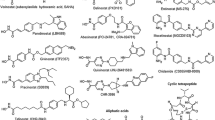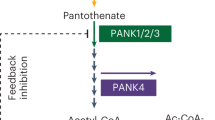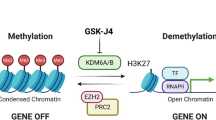Abstract
Vorinostat demonstrated preclinical and clinical efficacy in human cancers and is the first histone deacetylase inhibitor (HDACi) approved for cancer treatment. Tissue transglutaminase (TG2) is a multifunctional enzyme that catalyzes a Ca2+ dependent transamidating reaction resulting in covalent cross-links between proteins. TG2 acts also as G-protein in trans-membrane signaling and as a cell surface adhesion mediator. TG2 up-regulation has been demonstrated in several cancers and its expression levels correlate with resistance to chemotherapy and metastatic potential. We demonstrated that the anti-proliferative effect of the HDACi vorinostat is paralleled by the induction of TG2 mRNA and protein expression in cancer cells but not in ex vivo treated peripheral blood lymphocytes. This effect was also shared by other pan-HDACi and resulted in increased TG2 transamidating activity. Notably, high TG2 basal levels in a panel of cancer cell lines correlated with lower vorinostat antiproliferative activity. Notably, in TG2-knockdown cancer cells vorinostat anti-proliferative and pro-apoptotic effects were enhanced, whereas in TG2-full-length transfected cells were impaired, suggesting that TG2 could represent a mechanism of intrinsic or acquired resistance to vorinostat. In fact, co-treatment of tumor cells with inhibitors of TG2 transamidating activity potentiated the antitumor effect of vorinostat. Moreover, vorinostat-resistant MCF7 cells selected by stepwise increasing concentrations of the drug, significantly overexpressed TG2 protein compared to parental cells, and co-treatment of these cells with TG2 inhibitors reversed vorinostat-resistance. Taken together, our data demonstrated that TG2 is involved in the resistance of cancer cells to vorinostat, as well as to other HDACi.





Similar content being viewed by others
References
Akimov SS, Krylov D, Fleischman LF, Belkin AM (2000) Tissue transglutaminase is an integrin-binding adhesion coreceptor for fibronectin. J Cell Biol 148:825–838
Antonyak MA et al (2001) Effects of tissue transglutaminase on retinoic acid-induced cellular differentiation and protection against apoptosis. J Biol Chem 276:33582–33587. doi:10.1074/jbc.M105318200
Antonyak MA et al (2004) Augmentation of tissue transglutaminase expression and activation by epidermal growth factor inhibit doxorubicin-induced apoptosis in human breast cancer cells. J Biol Chem 279:41461–41467. doi:10.1074/jbc.M404976200
Bruzzese F et al (2006) Synergistic antitumor activity of epidermal growth factor receptor tyrosine kinase inhibitor gefitinib and IFN-alpha in head and neck cancer cells in vitro and in vivo. Clin Cancer Res 12:617–625. doi:10.1158/1078-0432.CCR-05-1671
Bruzzese F, Rocco M, Castelli S, Di Gennaro E, Desideri A, Budillon A (2009) Synergistic antitumor effect between vorinostat and topotecan in small cell lung cancer cells is mediated by generation of reactive oxygen species and DNA damage-induced apoptosis. Mol Cancer Ther 8:3075–3087
Buchwald M, Kramer OH, Heinzel T (2009) HDACi–targets beyond chromatin. Cancer Lett 280:160–167
Budillon A, Bruzzese F, Di Gennaro E, Caraglia M (2005) Multiple-target drugs: inhibitors of heat shock protein 90 and of histone deacetylase. Curr Drug Targets 6:337–351
Budillon A, Di Gennaro E, Bruzzese F, Rocco M, Manzo G, Caraglia M (2007) Histone deacetylase inhibitors: a new wave of molecular targeted anticancer agents. Recent Patents Anti Cancer Drug Discov 2:119–134
Budillon A, Carbone C, Di Gennaro E (2013) Tissue transglutaminase: a new target to reverse cancer drug resistance. Amino Acids 44:63–72. doi:10.1007/s00726-011-1167-9
Cao L, Petrusca DN, Satpathy M, Nakshatri H, Petrache I, Matei D (2008) Tissue transglutaminase protects epithelial ovarian cancer cells from cisplatin-induced apoptosis by promoting cell survival signaling. Carcinogenesis 29:1893–1900
Caraglia M et al (2004) Translational and post-translational modifications of proteins as a new mechanism of action of alpha-interferon: review article. Amino Acids 26:409–417
Chakraborty AR et al (2013) MAPK pathway activation leads to Bim loss and histone deacetylase inhibitor resistance: rationale to combine romidepsin with an MEK inhibitor. Blood 121:4115–4125. doi:10.1182/blood-2012-08-449140
Chhabra A, Verma A, Mehta K (2009) Tissue transglutaminase promotes or suppresses tumors depending on cell context. Anticancer Res 29:1909–1919
Chiba T et al (2004) Identification of genes up-regulated by histone deacetylase inhibition with cDNA microarray and exploration of epigenetic alterations on hepatoma cells. J Hepatol 41:436–445. doi:10.1016/j.jhep.2004.05.018
Choi K et al (2005) Chemistry and biology of dihydroisoxazole derivatives: selective inhibitors of human transglutaminase 2. Chem Biol 12:469–475. doi:10.1016/j.chembiol.2005.02.007
Di Gennaro E et al (2009) Modulation of thymidilate synthase and p53 expression by HDAC inhibitor vorinostat resulted in synergistic antitumor effect in combination with 5FU or raltitrexed. Cancer Biol Ther 8:782–791
Di Gennaro E et al (2010) Vorinostat synergises with capecitabine through upregulation of thymidine phosphorylase. Br J Cancer 103:1680–1691. doi:10.1038/sj.bjc.6605969
Di Giacomo G, Lentini A, Beninati S, Piacentini M, Rodolfo C (2009) In vivo evaluation of type 2 transglutaminase contribution to the metastasis formation in melanoma. Amino Acids 36:717–724
Ding L et al (2015) SAHA triggered MET activation contributes to SAHA tolerance in solid cancer cells. Cancer Lett 356:828–836. doi:10.1016/j.canlet.2014.10.034
Falkenberg KJ et al (2016) A genome scale RNAi screen identifies GLI1 as a novel gene regulating vorinostat sensitivity. Cell Death Differ 23:1209–1218. doi:10.1038/cdd.2015.175
Fantin VR, Richon VM (2007) Mechanisms of resistance to histone deacetylase inhibitors and their therapeutic implications. Clin Cancer Res 13:7237–7242. doi:10.1158/1078-0432.CCR-07-2114
Fesus L, Piacentini M (2002) Transglutaminase 2: an enigmatic enzyme with diverse functions. Trends Biochem Sci 27:534–539
Fok JY, Ekmekcioglu S, Mehta K (2006) Implications of tissue transglutaminase expression in malignant melanoma. Mol Cancer Ther 5:1493–1503. doi:10.1158/1535-7163.MCT-06-0083
Gray SG, Qian CN, Furge K, Guo X, Teh BT (2004) Microarray profiling of the effects of histone deacetylase inhibitors on gene expression in cancer cell lines. Int J Oncol 24:773–795
Grigoriev MY et al (2001) Tissue transglutaminase expression in breast carcinomas Journal of experimental & clinical cancer research: CR 20:265–268
Herman JF, Mangala LS, Mehta K (2006) Implications of increased tissue transglutaminase (TG2) expression in drug-resistant breast cancer (MCF-7) cells. Oncogene 25:3049–3058. doi:10.1038/sj.onc.1209324
Iacobuzio-Donahue CA et al (2003) Highly expressed genes in pancreatic ductal adenocarcinomas: a comprehensive characterization and comparison of the transcription profiles obtained from three major technologies. Cancer Res 63:8614–8622
Ierano C et al (2013) Loss of the proteins Bak and Bax prevents apoptosis mediated by histone deacetylase inhibitors. Cell cycle 12:2829–2838. doi:10.4161/cc.25914
Jang GY et al (2010) Transglutaminase 2 suppresses apoptosis by modulating caspase 3 and NF-kappaB activity in hypoxic tumor cells. Oncogene 29:356–367. doi:10.1038/onc.2009.342
Jones RA, Kotsakis P, Johnson TS, Chau DY, Ali S, Melino G, Griffin M (2006) Matrix changes induced by transglutaminase 2 lead to inhibition of angiogenesis and tumor growth. Cell Death Differ 13:1442–1453
Keen JC, Garrett-Mayer E, Pettit C, Mack KM, Manning J, Herman JG, Davidson NE (2004) Epigenetic regulation of protein phosphatase 2A (PP2A), lymphotactin (XCL1) and estrogen receptor alpha (ER) expression in human breast cancer cells. Cancer Biol Ther 3:1304–1312
Khot A, Dickinson M, Prince HM (2013) Romidepsin for peripheral T-cell lymphoma. Expert Rev Hematol 6:351–359. doi:10.1586/17474086.2013.814833
Kim DS, Park SS, Nam BH, Kim IH, Kim SY (2006a) Reversal of drug resistance in breast cancer cells by transglutaminase 2 inhibition and nuclear factor-kappaB inactivation. Cancer Res 66:10936–10943. doi:10.1158/0008-5472.CAN-06-1521
Kim YK et al (2006b) Activation of NF-kappaB by HDAC inhibitor apicidin through Sp1-dependent de novo protein synthesis: its implication for resistance to apoptosis. Cell Death Differ 13:2033–2041
Lai TS et al (2008) Identification of chemical inhibitors to human tissue transglutaminase by screening existing drug libraries. Chem Biol 15:969–978. doi:10.1016/j.chembiol.2008.07.015
Lane AA, Chabner BA (2009) Histone deacetylase inhibitors in cancer therapy. J Clin Oncol 27:5459–5468
Lee JH, Choy ML, Ngo L, Venta-Perez G, Marks PA (2011) Role of checkpoint kinase 1 (Chk1) in the mechanisms of resistance to histone deacetylase inhibitors. Proc Natl Acad Sci USA 108:19629–19634. doi:10.1073/pnas.1117544108
Lee HZ et al (2015) FDA approval: belinostat for the treatment of patients with relapsed or refractory peripheral T-cell lymphoma. Clin Cancer Res 21:2666–2670. doi:10.1158/1078-0432.CCR-14-3119
Lentini A, Provenzano B, Tabolacci C, Beninati S (2009) Protein-polyamine conjugates by transglutaminase 2 as potential markers for antineoplastic screening of natural compounds. Amino Acids 36:701–708
Liu T et al (2007) Activation of tissue transglutaminase transcription by histone deacetylase inhibition as a therapeutic approach for Myc oncogenesis. Proc Natl Acad Sci USA 104:18682–18687
Lorand L, Graham RM (2003) Transglutaminases: crosslinking enzymes with pleiotropic functions. Nat Rev Mol Cell Biol 4:140–156
Mann AP et al (2006) Overexpression of tissue transglutaminase leads to constitutive activation of nuclear factor-kappaB in cancer cells: delineation of a novel pathway. Cancer Res 66:8788–8795
Mann BS, Johnson JR, Cohen MH, Justice R, Pazdur R (2007) FDA approval summary: vorinostat for treatment of advanced primary cutaneous T-cell lymphoma. Oncologist 12:1247–1252. doi:10.1634/theoncologist.12-10-1247
Marks PA (2007) Discovery and development of SAHA as an anticancer agent. Oncogene 26:1351–1356
Martinet N et al (2003) In vivo transglutaminase type 1 expression in normal lung, preinvasive bronchial lesions, and lung cancer. Am J Respir Cell Mol Biol 28:428–435. doi:10.1165/rcmb.2002-0114OC
Mehta K, Fok J, Miller FR, Koul D, Sahin AA (2004) Prognostic significance of tissue transglutaminase in drug resistant and metastatic breast cancer. Clin Cancer Res 10:8068–8076. doi:10.1158/1078-0432.CCR-04-1107
Miyoshi N et al (2010) TGM2 is a novel marker for prognosis and therapeutic target in colorectal cancer. Ann Surg Oncol 17:967–972
Napoli M et al (2016) DeltaNp63/DGCR8-dependent MicroRNAs mediate therapeutic efficacy of HDAC inhibitors in cancer. Cancer Cell 29:874–888. doi:10.1016/j.ccell.2016.04.016
O’Connor OA et al (2006) Clinical experience with intravenous and oral formulations of the novel histone deacetylase inhibitor suberoylanilide hydroxamic acid in patients with advanced hematologic malignancies. J Clin Oncol 24:166–173
Palmieri G et al (2007) Somatostatin analogues, a series of tissue transglutaminase inducers, as a new tool for therapy of mesenchimal tumors of the gastrointestinal tract. Amino Acids 32:395–400
Panobinostat approved for multiple myeloma (2015) Cancer discovery 5:OF4 doi:10.1158/2159-8290.CD-NB2015-040
Robey RW, Chakraborty AR, Basseville A, Luchenko V, Bahr J, Zhan Z, Bates SE (2011) Histone deacetylase inhibitors: emerging mechanisms of resistance. Mol Pharm 8:2021–2031. doi:10.1021/mp200329f
Sarang Z et al (2005) Tissue transglutaminase (TG2) acting as G protein protects hepatocytes against Fas-mediated cell death in mice. Hepatology 42:578–587
Satpathy M, Cao L, Pincheira R, Emerson R, Bigsby R, Nakshatri H, Matei D (2007) Enhanced peritoneal ovarian tumor dissemination by tissue transglutaminase. Cancer Res 67:7194–7202
Siegel M, Khosla C (2007) Transglutaminase 2 inhibitors and their therapeutic role in disease states. Pharmacol Ther 115:232–245. doi:10.1016/j.pharmthera.2007.05.003
Song H et al (2011) Acetylation of EGF receptor contributes to tumor cell resistance to histone deacetylase inhibitors. Biochem Biophys Res Commun 404:68–73. doi:10.1016/j.bbrc.2010.11.064
Tatsukawa H, Furutani Y, Hitomi K, Kojima S (2016) Transglutaminase 2 has opposing roles in the regulation of cellular functions as well as cell growth and death. Cell Death Dis 7:e2244. doi:10.1038/cddis.2016.150
Verma A, Mehta K (2007) Transglutaminase-mediated activation of nuclear transcription factor-kappaB in cancer cells: a new therapeutic opportunity. Curr Cancer Drug Targets 7:559–565
Wang Q, Tan R, Zhu X, Zhang Y, Tan Z, Su B, Li Y (2016) Oncogenic K-ras confers SAHA resistance by up-regulating HDAC6 and c-myc expression. Oncotarget 7:10064–10072. doi:10.18632/oncotarget.7134
Yamaguchi H, Wang HG (2006) Tissue transglutaminase serves as an inhibitor of apoptosis by cross-linking caspase 3 in thapsigargin-treated cells. Mol Cell Biol 26:569–579. doi:10.1128/MCB.26.2.569-579.2006
Yuan L, Choi K, Khosla C, Zheng X, Higashikubo R, Chicoine MR, Rich KM (2005) Tissue transglutaminase 2 inhibition promotes cell death and chemosensitivity in glioblastomas. Mol Cancer Ther 4:1293–1302
Yuan L et al (2007) Transglutaminase 2 inhibitor, KCC009, disrupts fibronectin assembly in the extracellular matrix and sensitizes orthotopic glioblastomas to chemotherapy. Oncogene 26:2563–2573
Zhang R, Tremblay TL, McDermid A, Thibault P, Stanimirovic D (2003) Identification of differentially expressed proteins in human glioblastoma cell lines and tumors. Glia 42:194–208. doi:10.1002/glia.10222
Acknowledgments
We wish to thank Drs. Stuart Schreiber and Ralph Mazitschek from Dana Farber Cancer Institute (Boston, MA), and Initiative for Chemical Genetics, NIH (Bethesda, MD) for providing tubacin and niltubacin for the study and Dr. K. M. Rich, (Department of Neurological Surgery, Washington University School of Medicine, St Louis, MO, USA), for providing KCC009 compound.
Author information
Authors and Affiliations
Corresponding author
Ethics declarations
This study was partially supported by the following Research Grants to AB: AIRC (IG9332-2009); Italian Ministry of Health (RF-2011-02346914).
Conflict of interest
The authors declare no additional conflict of interest.
This article does not contain any studies with human participants or animals performed by any of the authors.
Additional information
Handling Editors: S. Beninati, M. Piacentini, C. M. Bergamini.
C. Carbone and E. Di Gennaro contributed equally to this work.
Electronic supplementary material
Below is the link to the electronic supplementary material.
Rights and permissions
About this article
Cite this article
Carbone, C., Di Gennaro, E., Piro, G. et al. Tissue transglutaminase (TG2) is involved in the resistance of cancer cells to the histone deacetylase (HDAC) inhibitor vorinostat. Amino Acids 49, 517–528 (2017). https://doi.org/10.1007/s00726-016-2338-5
Received:
Accepted:
Published:
Issue Date:
DOI: https://doi.org/10.1007/s00726-016-2338-5




